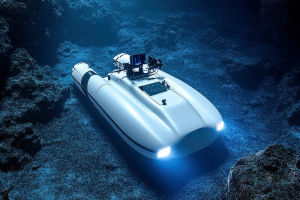Have you ever wondered why the speed of light is known as the ultimate speed limit of the universe? Why can’t anything outrun it—or even match it?
From science fiction fantasies to the deepest questions in physics, the speed of light continues to fascinate and challenge our understanding of reality. In this article, we’ll explore what makes light so special, why its speed is considered a cosmic boundary, and whether the future of science might one day bend the rules.
What Is the Speed of Light?
The speed of light in a vacuum is about 299,792 kilometers per second (or roughly 186,282 miles per second). This speed is incredibly fast — light can circle the Earth more than seven times in one second!
Light's speed is a fundamental constant in physics, meaning it's always the same no matter where or when you measure it. This constancy makes it very special in our understanding of the universe.
Why Is Light Speed a Limit?
According to Albert Einstein's theory of relativity, nothing with mass can reach or exceed the speed of light. As objects move faster and closer to this speed, their energy requirements to keep accelerating grow enormously.
In fact, to accelerate a spaceship or particle to the speed of light would require infinite energy — which is practically impossible. This is why light speed is often called the "cosmic speed limit."
What Happens Near Light Speed?
When something moves near light speed, strange things happen. Time slows down for the moving object compared to someone standing still, a phenomenon called "time dilation." Also, the object's mass effectively increases, making it harder to speed up even more.
These effects have been tested with particles in large machines like particle accelerators, confirming Einstein's predictions.
Are There Exceptions or Loopholes?
Scientists have wondered if anything could go faster than light. Some concepts, like "tachyons" (hypothetical particles that always move faster than light), have been proposed but never observed.
Another idea involves "quantum entanglement," where particles seem connected instantly across distances. But this doesn't allow faster-than-light communication or travel; it's just a weird quantum effect.
What About Space Travel and Science Fiction?
Many sci-fi stories imagine faster-than-light travel using warp drives or wormholes. While these ideas are fascinating, they remain theoretical and face huge scientific challenges.
Currently, no experimental evidence shows we can break the light-speed barrier with technology.
Why Is This Speed Limit Important?
This speed limit shapes how the universe works — it controls how fast information and energy can travel. It also affects how we understand space, time, and causality (the cause-effect relationship).
Without this limit, many basic laws of physics might not hold, and our understanding of the universe would be very different.
Could Future Discoveries Change This?
Science is always evolving. Some modern theories, like those involving extra dimensions or quantum gravity, hint at possible ways to rethink speed limits.
However, so far, no solid evidence suggests the speed of light can be exceeded in practice.
Summary: The Cosmic Speed Limit
While science fiction dares to imagine faster-than-light travel, our current understanding of physics firmly places light speed as the ultimate limit. This boundary isn’t just a number—it’s a pillar that supports the laws of space, time, and energy. As we continue to explore the cosmos and develop new theories, the speed of light remains a crucial guidepost.
Who knows what future discoveries may reveal? For now, light still leads the way—as the fastest thing in the known universe, and a key to unlocking its greatest mysteries.


